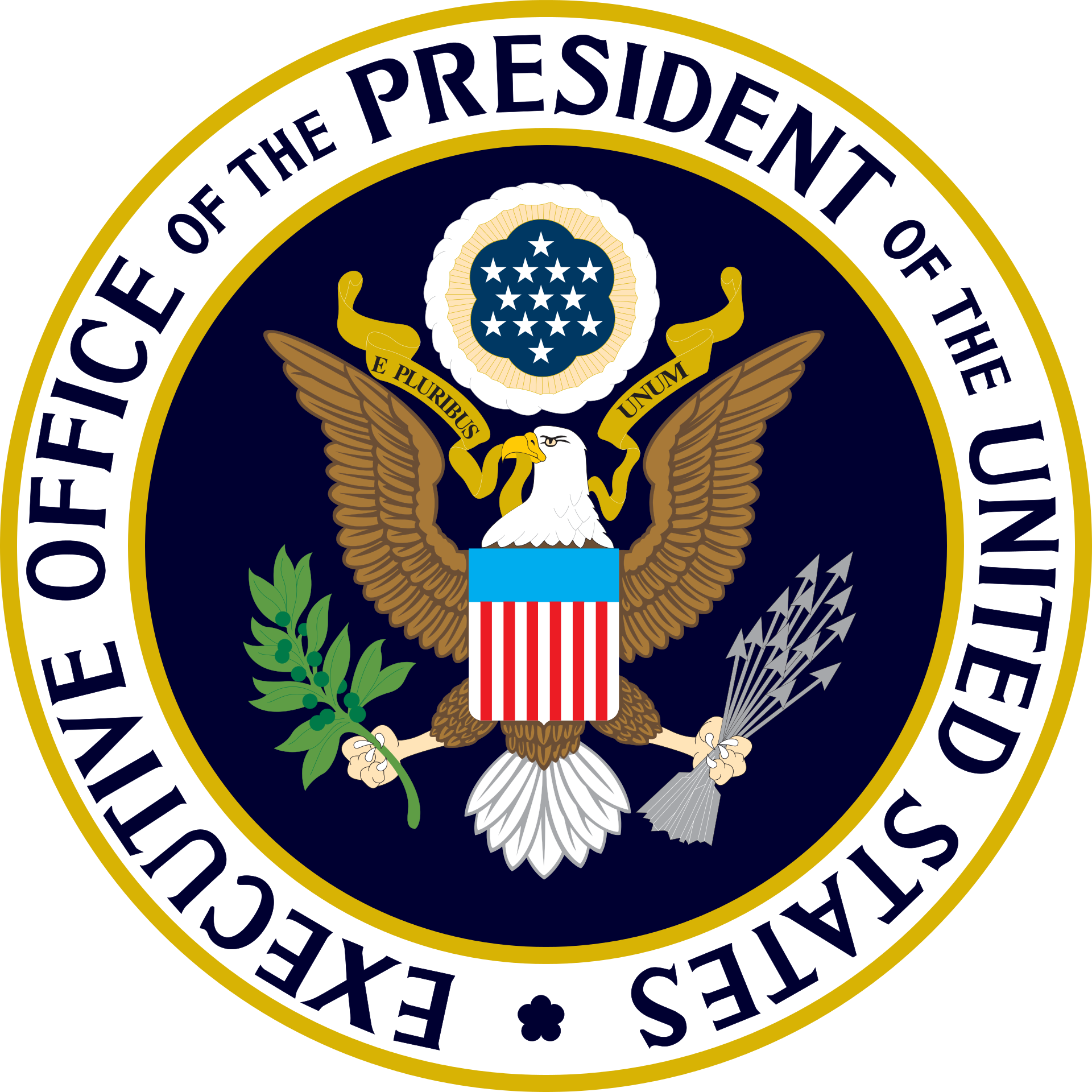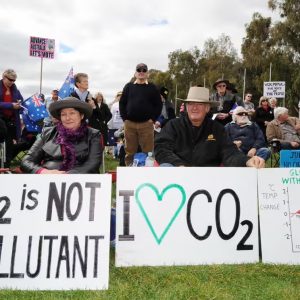President-elect Joe Biden’s victory in the 2020 presidential election left many liberals with dueling emotions: the joy of avoiding four more years of President Trump, and the agony of a Republican Senate dooming any hope of an expansive progressive agenda. Although the two runoffs in Georgia could bring the number of Democratic senators to 50, this majority too will be unable to bring about the structural change many on the left were hoping for. On Nov. 9, Sen. Joe Manchin of West Virginia, the most moderate Democratic member of the Senate, said he would vote to keep the filibuster — killing any dreams of a $15 minimum wage, landmark climate bill, and new Voting Rights Act.
Despite this disappointment for progressives, the American president is known as the “most powerful person in the world” for a reason. Since George Washington’s inauguration, the powers of the presidency have ballooned in scope, leaving the office with much untapped potential for President-elect Biden. Indeed, any hope of fulfilling a progressive agenda lies in the administrative state — the collection of agencies, cabinet departments, and other bureaucracies that make up the executive branch.
The Administrative State: A Brief History
The administrative state can be traced back to Andrew Jackson, who notoriously used a system of patronage for executive appointments. This spoils system largely continued until 1883, when President Chester Arthur signed the Pendleton Act. Designed to make the civil service a meritocracy, the Pendleton Act created exams for many bureaucratic officers, barred the use of government funds for political purposes, and established a commission to vigorously enforce its provisions. Four years later, Congress expanded this administrative state by passing the Interstate Commerce Act, which established the Interstate Commerce Commission, America’s first regulatory agency, to oversee the railroad industry.
As the 19th century rolled into the 20th, the Progressive Era arose as a response to industrialization’s problems. President Teddy Roosevelt used his executive power to unilaterally “[quadruple] the amount of protected land, [and create] 150 new national forests and 18 national monuments.” A decade later, President Woodrow Wilson significantly expanded the regulatory state by signing bills that created the Federal Reserve and Federal Trade Commission, or FTC, which markedly expanded the government’s role in the banking and business industries, respectively.
However, the history of the administrative state could be divided into two periods: pre-FDR and post-FDR, and for good reason. President Roosevelt’s New Deal ushered in a slate of executive agencies: the National Labor Relations Board to curb unfair labor practices; the Securities and Exchange Commission to oversee Wall Street; the Federal Communications Commission to regulate telecommunications, along with a multitude of others. Of course, FDR had the advantage of a large majority in both houses of Congress, but he also took action individually. Roosevelt’s Executive Order 6102, for instance, devalued the dollar against the gold standard, helping farmers recover from debt.
Future presidents, including Lyndon B. Johnson and Nixon, continued the trend of using the power of executive orders to institute programs, such as affirmative action, in government contracts. One of President Reagan’s actions demonstrates the chilling potential of the Executive; in 1981, he single handedly fired more than 11,000 air traffic controllers after they went on strike. Each president since the beginning of the 20th Century, then, has used the executive branch to put their unique stamp on the office. President-elect Biden won’t have the Senate majorities FDR and LBJ did, but he can use the groundwork they laid to leave his mark on the country.
Joe Biden Can Still Be A Consequential President
Unfortunately, on January 20th, President Biden will be inheriting a crippled federal government. This was no accident. A month after taking office, President Trump’s chief strategist, Steve Bannon, declared that he sought to “deconstruct the administrative state,” particularly by leaving a bevy of federal positions unfilled. That declaration by Bannon came a few years after conservative activist Grover Norquist’s stated desire to “drown government in the bathtub,” a pithy encapsulation of the Republican Party’s position since the Reagan Era. Despite the mess Biden is stepping into, there is much he can still do.
“Personnel is policy” is an often-quoted remark around Washington, D.C.; it emphasizes how the appointment of people can give clarity to the vision of an administration. President-Elect Biden’s appointments have drawn some criticism from progressives, but his selection of experienced public servants, such as Ron Klain as Chief of Staff and Janet Yellen as Treasury Secretary, have been applauded for their competence. After four years of Trump, Biden would be wise to make this the centerpiece of his administration. Filling important positions — from Cabinet Secretaries to low-level bureaucrats — with committed policymakers is a good starting point.
However, that personnel needs to make good policy. That’s where the power of the administrative state comes in. In both 2019 and 2020, The American Prospect published a “Day One Agenda” — lists of wide-ranging policies President Biden could pursue without Congress. One potential action it highlights is cancelling student debt. Because the US Department of Education holds 92% of all student loan debt, the President could cancel $1.5 trillion under an obscure authority granted to him in the 1965 Higher Education Act.
The effectiveness of this executive action as a stimulus for a COVID-19 ravaged economy is highly debated — according to some policymakers, another round of stimulus checks would be more optimal — but this maneuver may be the best Biden can do on his own. The proposal polls well, with approximately 60 percent of Americans saying they support the idea. Furthermore, in a 2019 study, researchers found that those who had their student debt forgiven saw their real incomes rise by $4,000. There are rightful concerns about fairness, however: why should we be forgiving the debt of a successful doctor? To address this, some form of means-testing or income threshold could be set — only forgiving up to $50,000 of debt, for instance. Of course, this wouldn’t address the root issues of inequality, but it is a significant step in the right direction, and, more importantly, does not require Congress.
Antitrust policy is another area where President Biden could act individually. On the heels of the House of Representatives’ landmark report on Big Tech, a nascent antitrust movement is rising. As antitrust scholar Sandeep Vaheesan wrote in Slate, Joe Biden has many tools at his disposal to combat massive conglomerates. For instance, the FTC could crack down on exclusionary contracts, which companies like Google and Apple use to “force or bribe their customers, distributors, or suppliers not to do business with their rivals.” Beyond Big Tech, the Biden Administration could pursue a vigorous antitrust policy in areas from healthcare to agribusiness.
Another related topic is curbing the power of big banks. As former Senate aide Graham Steele explains, two pieces of legislation — the Dodd-Frank Act and the Bank Holding Company Act — give the Federal Reserve the power “to force large banks to divest subsidiaries,” reducing these banks’ size and potential to create a 2008-like catastrophe. In addition, Steele continues, the Federal Reserve can use its response to the Wells Fargo scandal as precedent, by imposing a size cap on the largest banks. Both good policy and good politics, reining in “too big to fail” banks could help Joe Biden mitigate the likelihood of a financial crisis and harness a populist coalition for a potential 2024 re-election campaign.
One last area is postal banking, an idea that has been gaining steam recently. In a piece for Vox, writer Dylan Matthews wrote that millions of Americans are currently unbanked or underbanked, and those who are disproportionately tend to be people of color. President-elect Biden can appoint members to the USPS Board of Governors — according to Matthews, there are six potential vacancies (out of nine total slots) looming by 2022. With 50 votes needed to confirm appointments, President-elect Biden could cobble together a bare majority in the Senate.
There’s a wide array of other issues a President Biden can take action on — from decriminalizing marijuana, to factory farming, or to climate change. Biden has indicated he will reinstate more than 300 environmental regulations, rejoin the Paris Climate Accords, and end President Trump’s travel ban on six Muslim-majority countries. This parallel to President Trump is an interesting one. The 2017 tax cut was essentially the only major bill he passed through Congress, but he will nonetheless be remembered in history as an extremely consequential president. Why? The answer is simple: executive power.
From deregulation — which will lead to 1.8 billion tons of greenhouse gases into the atmosphere between now and 2035, by one estimate — to family separation, to Bill Barr’s Department of Justice, the President has acted unilaterally to inflict tremendous damage. The onus is now on Joe Biden to show the American people a vision for how executive power can be used for good.
There is one specific area in which President-elect Biden could emulate President Trump politically; in 2020, as a result of Trump’s trade war, farmers, an important voting bloc for President Trump were hurting economically. In response, the Department of Agriculture funnelled a total of $16 billion to farmers. While economically unsustainable, this strategy appears to have paid off politically: he has a 53 percent approval rating among rural adults. This general tactic — delivering policy wins for politically important constituencies — is something Joe Biden could emulate.
There’s one more political reason for Biden to invest in executive action and competence, one highlighted by Alex Pareene of The New Republic. He notes that even despite the divide between the progressive and moderate wings of the Democratic Party, both believe in making government work. Pareene’s article notes how cash-strapped state unemployment offices have resulted in many people unable to receive unemployment checks. Of course, Biden cannot solve this issue from the federal government, but he can send a top-down message that the Democratic Party is committed to simply making government competent again.
There are numerous points of access where citizens can see government at work: the Post Office, Social Security, and VA hospitals, to name a few. One key goal for this incoming administration should be to make these points of access as functional as possible: can people get their mail on time? Can they see the government cancelling their debt? Can they witness a public sector hard at work to make sure they get access to banking services? Joe Biden can do much to fulfill this vision on his own. His re-election prospects in 2024 may well hinge on it.
Can’t Amy Coney Barrett Stop Everything?
The courts have historically been very deferential to executive agencies. This principle comes in two main forms: Chevron and Auer deference. Chevron deference — stemming from the case Chevron v. Natural Resources Defense Council (1984) — holds that an agency’s interpretation of a legislative statute is constitutional if it is a “permissible construction” of the law, language favorable to bureaucracies. Auer deference — from the case Auer v. Robbins (1997) — maintains that courts must yield to agencies’ interpretations of their own regulations, so long as those regulations are ambiguous. In the same vein, in Heckler v. Chaney (1985), the court ruled that an agency’s actions carry a “presumption of unreviewability.”
This marks a line of court cases that seem to provide a solid defense to the executive actions of Joe Biden. Of course, a 6-3 conservative court will likely change that. Chevron arose because much of the policymaking since the 1970s had been done by Republicans, and opportunistic justices will seek to reverse the Supreme Court’s prior actions. Indeed, one of the long-held goals of groups like the Federalist Society is a complete rollback of Chevron deference. And as University of Washington Professor Scott Lemieux warns, dissents from Justices Thomas, Alito, and Gorsuch, along with the records of Justices Kavanaugh and Barrett suggest their interest in reviving the previously defunct “nondelegation doctrine,” under which legislative bodies cannot delegate any rulemaking authority to executive agencies. With the elevation of Justice Barrett, there may be a five justice majority for ending the administrative state as we know it.
Still, the Biden Administration should not give in to defeatism. Many of these actions may not have anyone with legal standing to sue (harm is a prerequisite for standing). Even if the Supreme Court goes on a killing spree of Biden executive actions, the President-elect should use it as a political tool. Biden and his staff should point out every time they can that they accomplished a litany of goals, but were stifled by an unelected body of Republican officials put there only because Mitch McConnell cynically gamed the system.
Either way, President-elect Biden ought to fully use the alphabet soup of executive agencies at his disposal. There’s an enormous amount he can do on his own, and an even greater number of lives he can make better. After all, isn’t that what government is about?
Featured Image Source: whitehouse.gov






Comments are closed.